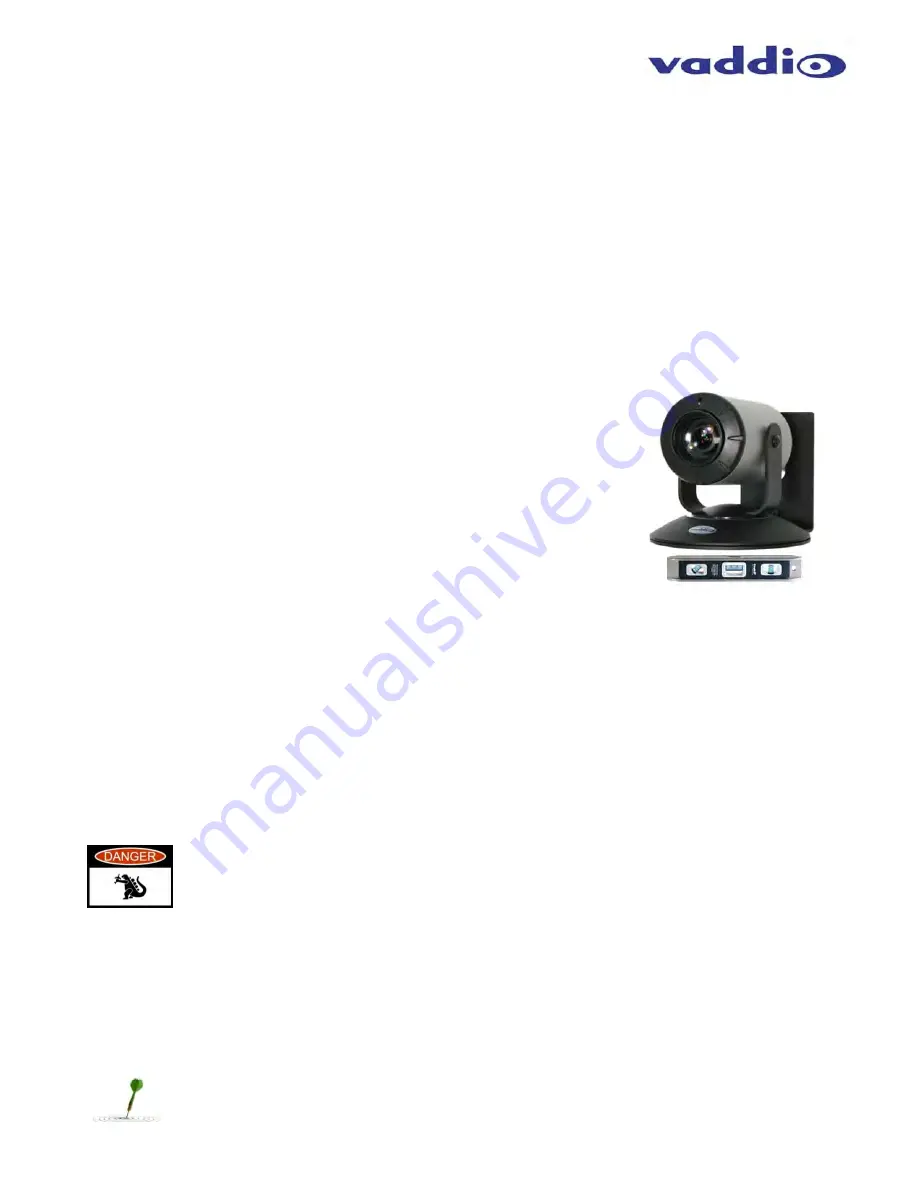
ZoomSHOT 20 QDVI Camera System
ZoomSHOT 20 QDVI System - Document Number 342-0966 Rev A
Page 8 of 20
F
IRST
T
IME
S
ET
-
UP
:
The ZoomSHOT 20 was designed to be very easy to use and operate. There is documentation at the back of this
manual for pin-outs of the connectors on the Quick-Connect and camera.
Before Installing:
Choose camera mounting location, paying close attention to camera viewing angles, lighting conditions,
possible line of site obstructions, and checking for in-wall obstructions where the camera is to be mounted.
Always pick a mounting location that will optimize the performance of the camera. Please locate the camera to
enable easy positioning of the camera body with the ability to point down and away from the ceiling and a pile
of fluorescent lighting cells.
Cameras generally don’t like to be swamped with fluorescent light and nobody sits
on the ceiling anyway
.
The Thin Profile Wall Mount for the ZoomSHOT 20 can be mounted directly to a 1-gang wall box or can be
mounted using only dry wall anchors.
For Power/Video and RS-232 signals, use standard Cat-5/5e/6 cable (568B termination with real RJ-45
connectors) from the EZ-POWER VIDEO and RS-232 ports on the back of the ZoomSHOT 20 to the Quick-
Connect DVI/HDMI-SR Interface. These jacks are
color coded
for ease of connection.
Step By Step Installation Instructions:
Step 1:
After determining the optimum location of the camera, route, mark and
test the two (2) Cat-5 cables from the camera to the Quick-Connect DVI/HDMI-SR
Interface located at the head-end. The two Cat-5e cables should feed-through the
hole located on the rear flange of the Thin Profile Wall Mount. If the bracket is to
be mounted on a 1-gang wall box, use the screws supplied with the wall box cover
plate to attach the Thin Profile Wall Mount. If mounting to the drywall with wall
anchors, use two (2) quality wall anchors. The mounting holes are slotted and are
90° opposing to provide easy leveling. Level the mount and tighten the mounting
screws.
Step 2:
Using the HD VIDEO SELECT rotary switch and CAMERA SETTINGS dip switches on the back of the camera, set
up the camera’s output resolution and functional preferences. There are tables on previous pages that identify the
choices…
maybe keep these tables handy for future use…or you can easily look them up on the Vaddio website
(vaddio.com) when needed.
On the camera:
Set the desired HD Resolution with the rotary selection switch.
Set the IR frequency of the camera (if it is to respond to the IR remote control).
Set the image orientation (normal or flipped).
Step: 3:
Follow the sample wiring diagram for connecting the Cat-5 cables to the ZoomSHOT 20 and Quick-
Connect DVI/HDMI-SR Interface (yep, on the previous page, but read and understand the rest of these instructions
especially the next note).
NOTE:
Check all Cat-5e cables for continuity in advance of the final connection. Label the
Cat-5e cables. Plugging the EZ-POWER VIDEO cable into the wrong RJ-45 may cause
damage to the camera system and void the warranty. For premise cabling, please use real
RJ-45 connectors and crimpers. Please don’t use the pull through or EZ-type RJ-45s.
Step 4:
Place the camera onto the camera mount and use the provided ¼”-20 screws to secure the camera to the
mount. To dress the cabling, push the extra cable back into the wall opening.
Step 5:
Connect the Vaddio 24 VDC, 2.08 Amp power supply to a power outlet and to the Quick Connect
DVI/HDMI-SR Interface. Power will travel down the EZ-POWER VIDEO Cat-5e cable to the camera. The camera
will boot up and in a few seconds, HSDS (differential) video will travel back down the Cat-5e cable and be ready to
accept control information from the IR remote control or RS-232 camera controller.
To insure proper continuity of control and operation of the cameras, the RS-232 controller (control
system or joystick) should be powered on after the camera and interface.




















